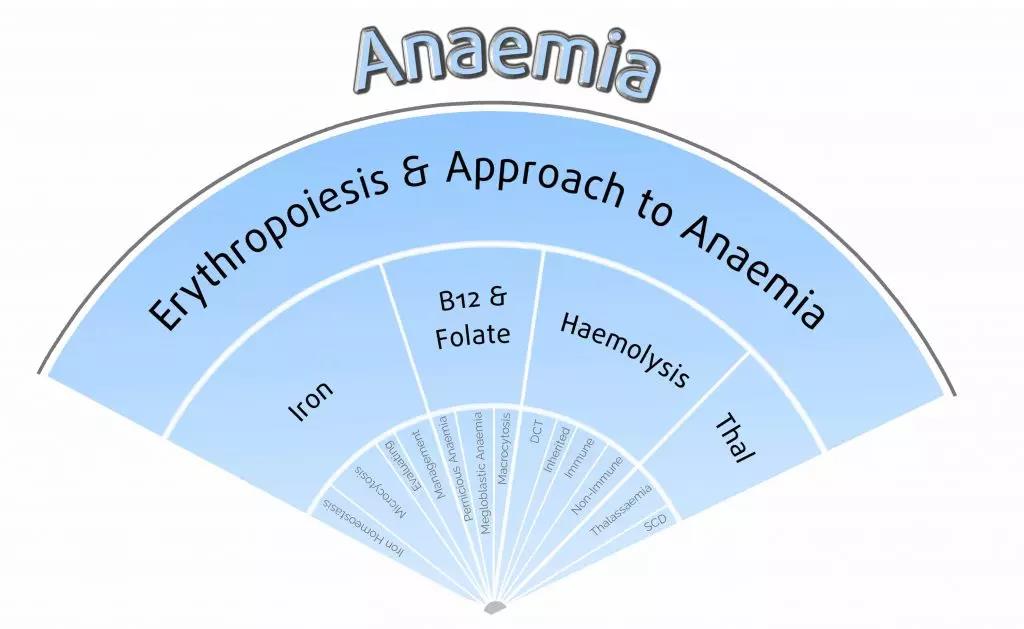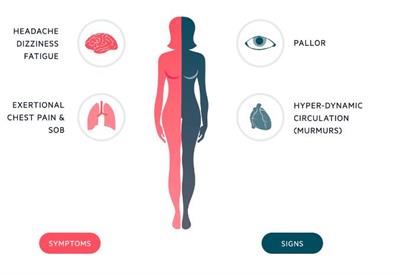

Anaemia overview
Strictly speaking, anaemia is defined as
A reduction in
circulating red blood cell mass
.However, in clinical practice,
anaemia is defined by more measurable variables:
- Haemoglobin (Hb) concentration
- Red blood cell (RBC) count
- Haematocrit
The World Health Organisation (WHO) defines anaemia
by the following haemoglobin (Hb) concentrations:
Males < 130 g/L (130-175 g/L) <13.0g/dL for men and
Females < 120 g/L (120-155 g/L)* <12.0g/dL for women.
* In pregnancy, a Hb < 110 g/L is diagnostic.
Anaemia Clinical features
Clinical features depend on 2 factors:
1. The absolute degree of anaemia
2. The rate of decline in Hb concentration.
Patients with a sudden drop in Hb will generally be more symptomatic
than patients with a gradual decline in Hb concentration.
In cases of acute blood loss,
the signs and symptoms of hypovolaemic shock may be present.
The clinical features associated with anaemia
reflect a reduction in oxygen delivery.
Anaemia
Symptoms
Fatigue
Confusion
Headache
Dizziness
Syncope
Dyspnoea
Palpitations
Angina
Anaemia
Signs
Conjunctival pallor
Shock
Pulse: Tachycardia / Bounding Pulse
BP: Postural hypotension

However, this definition was mainly put in place for epidemiological studies,
and fails to take into account the normal variation in haemoglobin levels
with age and laboratory instruments.
Anaemia is hence more prudently defined as
A haemoglobin that falls below the reference range determined by the testing laboratory.
This requires that haemoglobin measurements are taken from normal individuals
to determine a reference range.
and fails to take into account the normal variation in haemoglobin levels
with age and laboratory instruments.
Anaemia is hence more prudently defined as
A haemoglobin that falls below the reference range determined by the testing laboratory.
This requires that haemoglobin measurements are taken from normal individuals
to determine a reference range.
Anaemia is a manifestation of an underlying problem,
not a diagnosis in itself.
Further investigation must establish the underlying cause.
not a diagnosis in itself.
Further investigation must establish the underlying cause.




